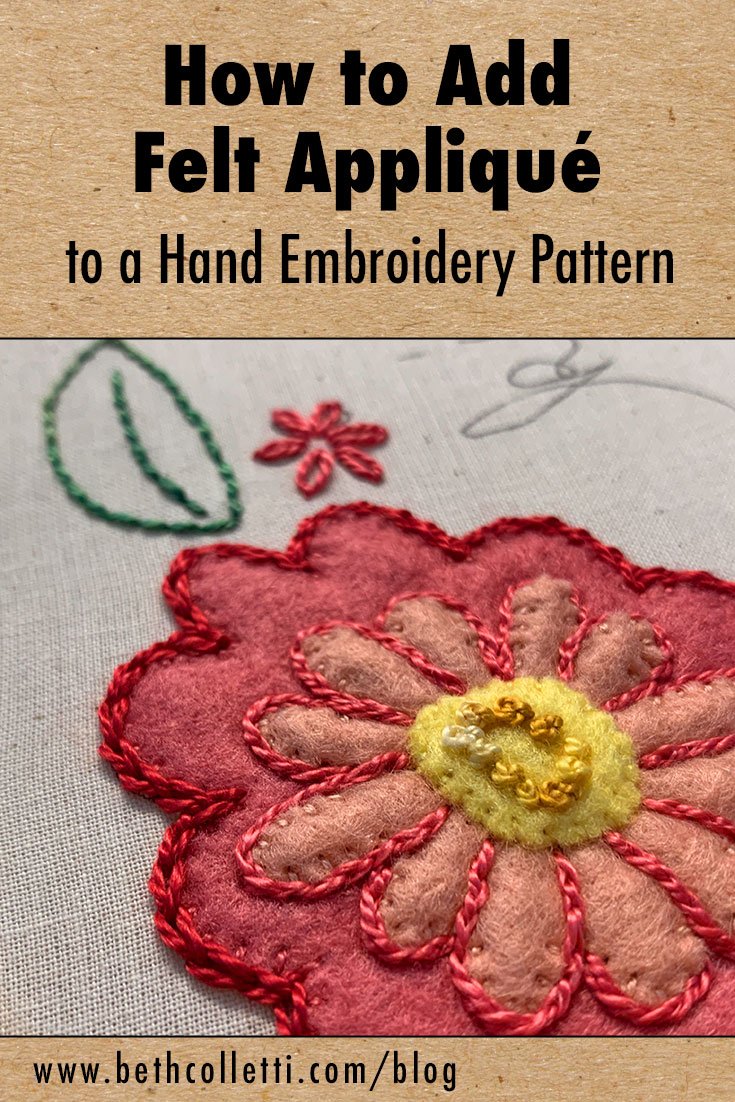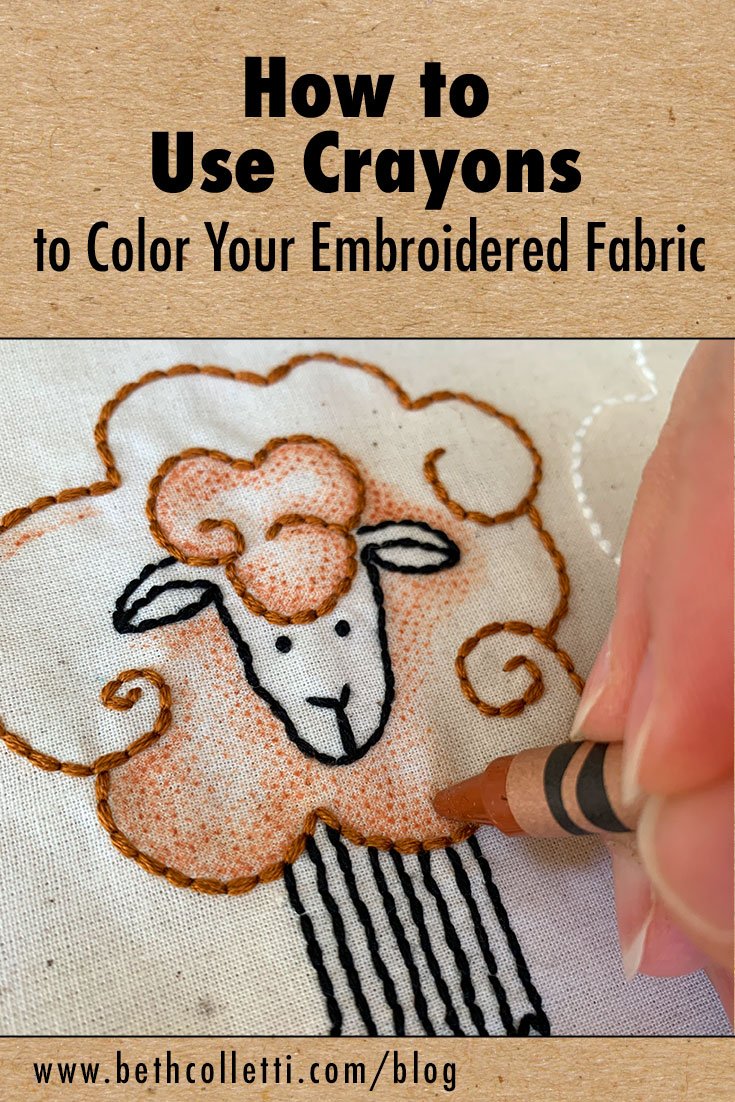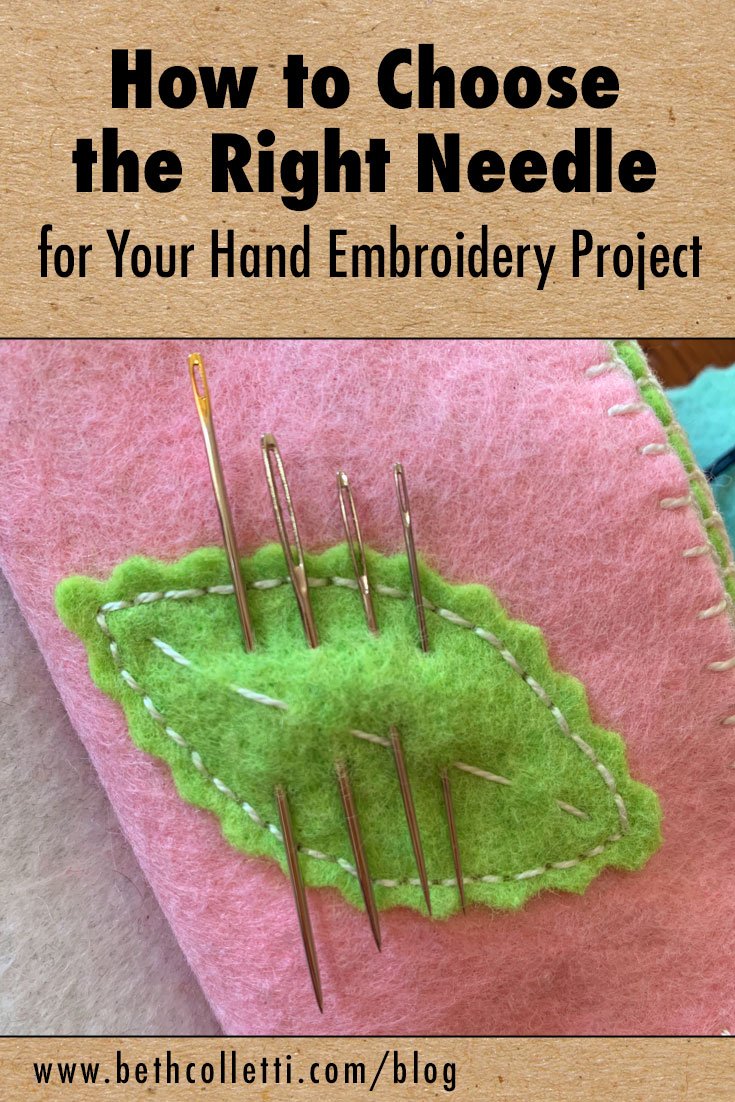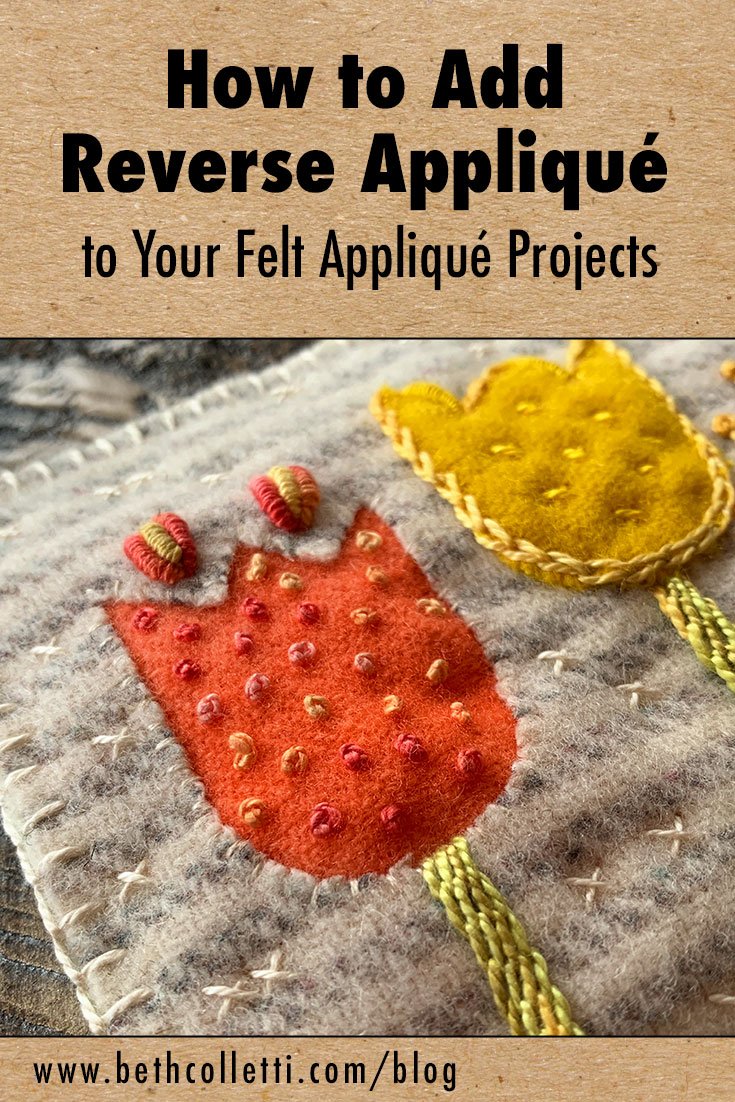Do you love felt appliqué and hand embroidery? Did you know that you can turn most hand embroidery patterns into felt appliqué projects? By making a few small adjustments and using the technique in this article, you can give a favorite embroidery pattern a completely different look. Read the simple step by step tutorial in this article for a look at how to do it.
Read More6 Ways to Change and Reuse a Hand Embroidery Pattern
Instead of treating an embroidery pattern that you buy as “once and done”, there are multiple ways you can embroider a design you love to make it into something new and different. Below are six ideas for how you can alter and reuse an embroidery pattern so you get even more stitching enjoyment out of it!
Read MoreHow to Use Crayons to Color Your Embroidered Fabric
Have you ever felt like your embroidery needed a little something extra? There are SO many fun ways that you can pair hand embroidery with other media. One very simple way to begin is by using regular Crayola crayons to add a pop of color to your design. Read on to get tips for coloring your embroidered fabric with regular old crayons, plus see an example!
Read MoreHow to Choose the Right Needle for Your Hand Embroidery Project
If you want your hand embroidery experience to be as relaxing and enjoyable as possible, then using the right needle is key! Choosing a needle that’s appropriate for your thread, fabric and project will save you tangles, pricked fingers, and the frustration of fighting with your thread. Learn what to keep in mind when choosing a needle for your projects, and what the most commonly used needles for hand embroidery are.
Read MoreHow to Add Reverse Appliqué to Your Felt Appliqué Projects
Incorporating reverse appliqué into your embroidered felt appliqué projects can be an interesting technique to try because it adds even more dimension to your layered felt. With reverse appliqué you layer two pieces of fabric with the bottom layer being visible through the top layer. This technique is done by cutting out a shape in the top piece of fabric to allow the fabric under it to show through.
Read More




